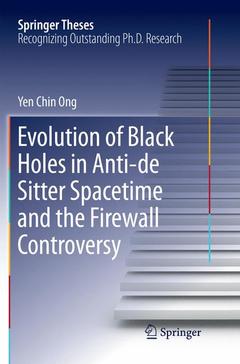Description
Evolution of Black Holes in Anti-de Sitter Spacetime and the Firewall Controversy, Softcover reprint of the original 1st ed. 2016
Springer Theses Series
Author: Ong Yen Chin
Language: English
Subject for Evolution of Black Holes in Anti-de Sitter Spacetime and...:
Publication date: 03-2019
222 p. · 15.5x23.5 cm · Paperback
Publication date: 12-2015
Support: Print on demand
Description
/li>Contents
/li>Biography
/li>Comment
/li>
This thesis focuses on the recent firewall controversy surrounding evaporating black holes, and shows that in the best understood example concerning electrically charged black holes with a flat event horizon in anti-de Sitter (AdS) spacetime, the firewall does not arise.
The firewall, which surrounds a sufficiently old black hole, threatens to develop into a huge crisis since it could occur even when spacetime curvature is small, which contradicts general relativity.
However, the end state for asymptotically flat black holes is ill-understood since their curvature becomes unbounded. This issue is avoided by working with flat charged black holes in AdS. The presence of electrical charge is crucial since black holes inevitably pick up charges throughout their long lifetime. These black holes always evolve toward extremal limit, and are then destroyed by quantum gravitational effects. This happens sooner than the time required to decode Hawking radiation so that the firewall never sets in, as conjectured by Harlow and Hayden.
Motivated by the information loss paradox, the author also investigates the possibility that ?monster? configurations might exist, with an arbitrarily large interior bounded by a finite surface area. Investigating such an object in AdS shows that in the best understood case, such an object -- much like a firewall -- cannot exist.




